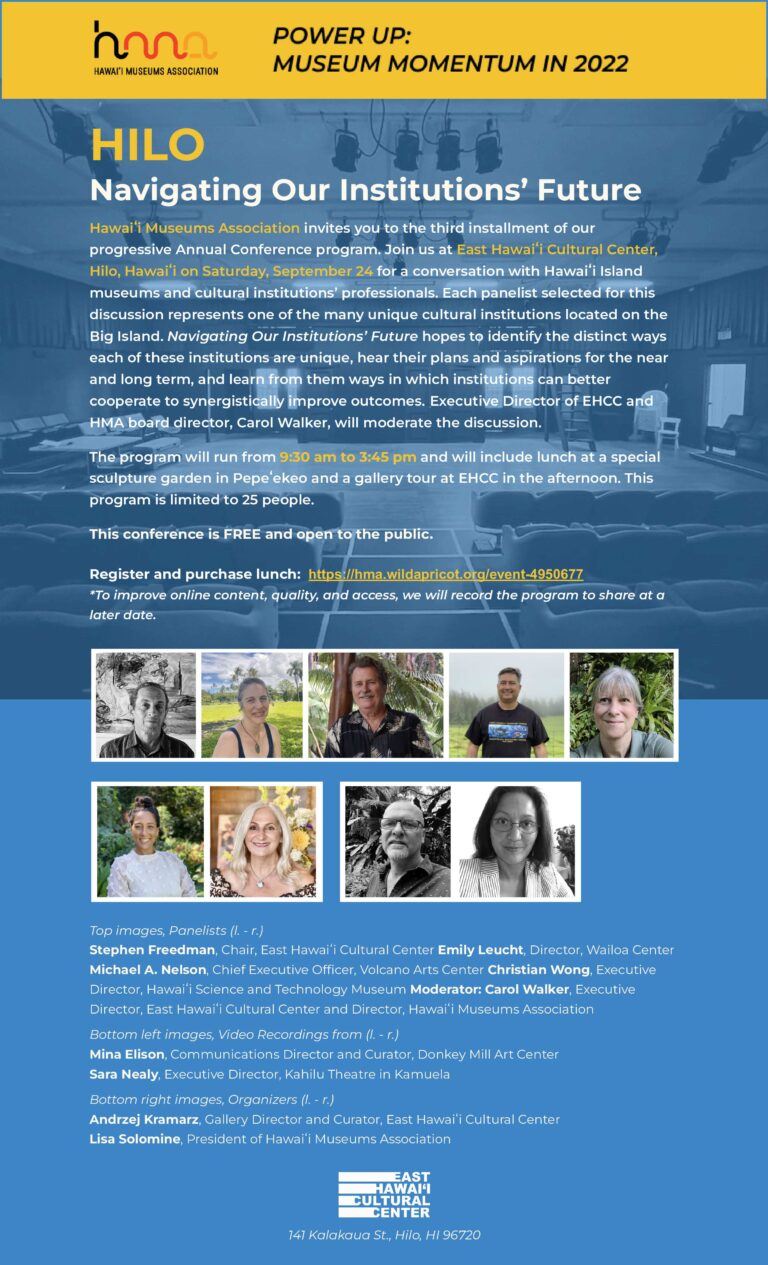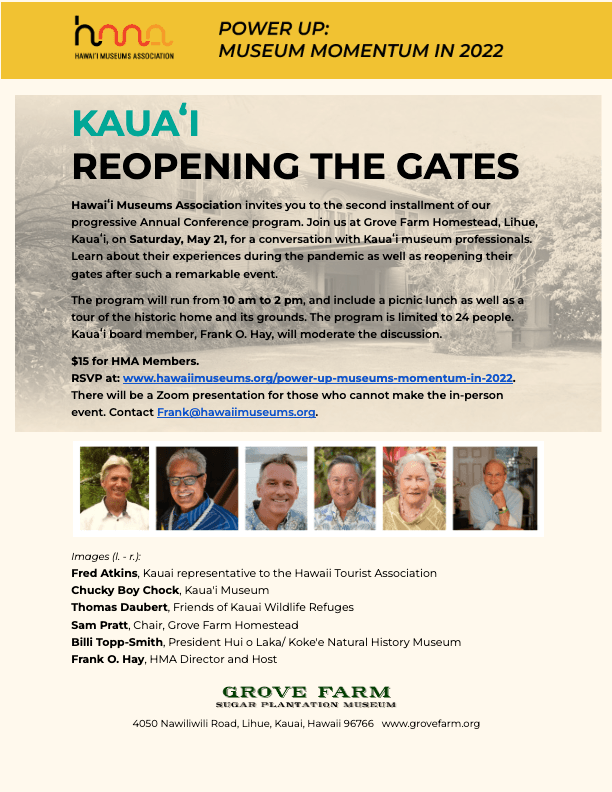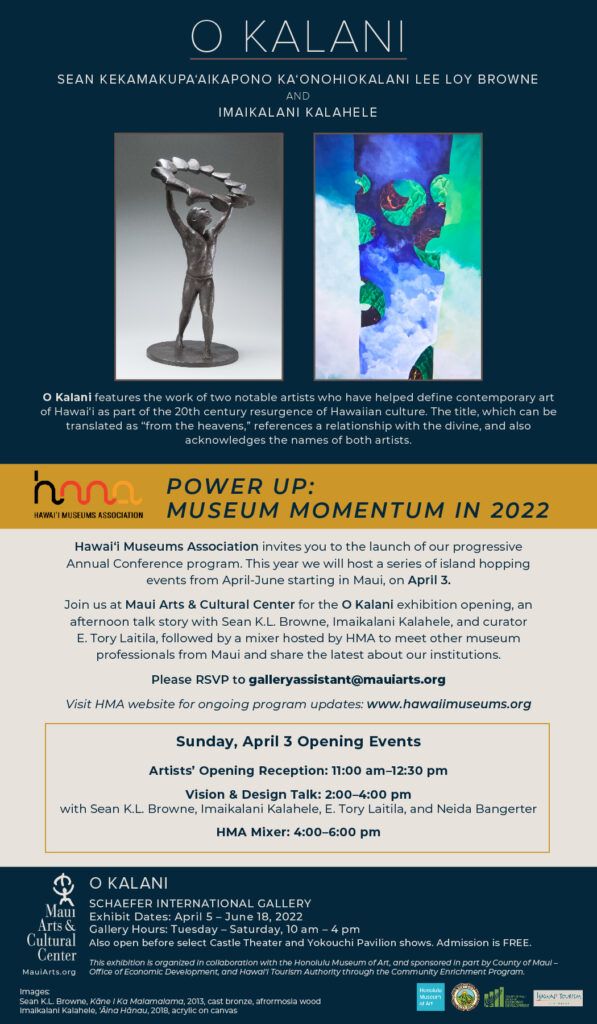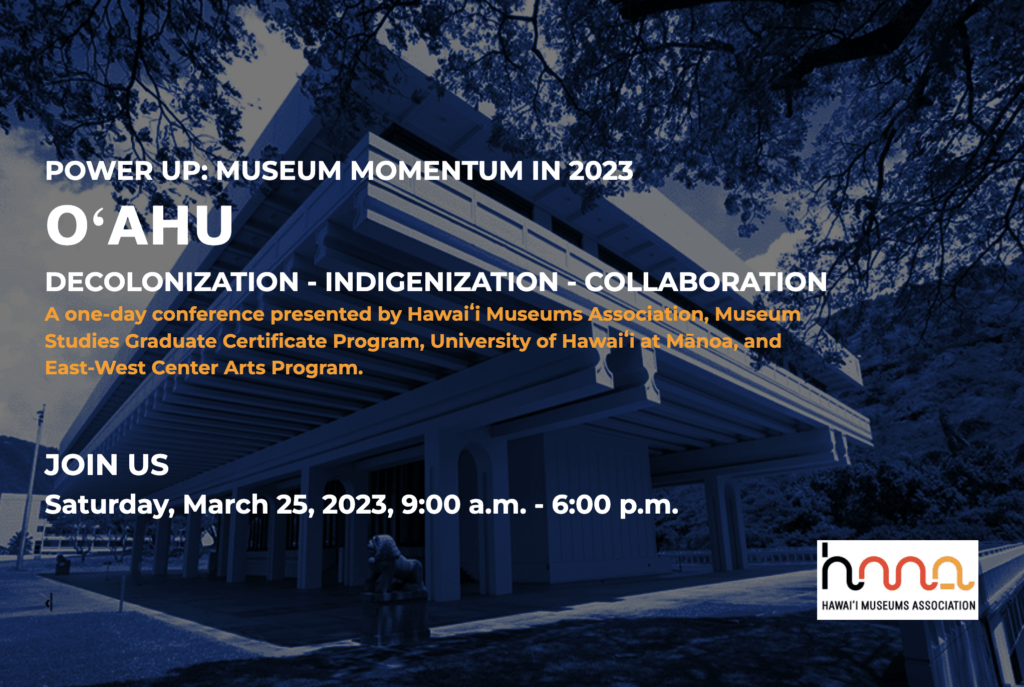Power Up: Museum Momentum in 2022-23
Aloha mai kākou,
Our Hawaiʻi museums and cultural institution professionals have in the last two years arduously navigated through a changing world and are now diligently immersed in the implementation of creatively tailored programmatic solutions that reconnect with the community and rebuild visitor confidence through regulated virtual, hybrid, and in-person events.
Hawaiʻi Museums Association (HMA) is excited to be joining together museum professionals from across our islands for a progressive conference unlike any other we’ve organized in the past. Power Up: Museum Momentum in 2022 wishes to address the resurgence of our museums after a precarious and conflicted two years. Our aim this year is to host a series of island hopping events on 5 of our islands, addressing 6 concerns facing our Hawaii museum staff and institutions today. These themes are based on your conference survey responses provided in 2021. We will also present a window into our collective institutions as we join them and learn about their current programs and financial and organizational realities.
HMA launched this progressive conference program beginning in Maui on April 3. Board Director and Gallery Director of Maui Arts and Cultural Center (MACC), Neida Bangerter, organized a day of events in alignment with the opening of O Kalani, an exhibition featuring the work of two prominent, Kanaka Maoli artists Sean K.L. Brown and Imaikalani Kalahele.
On May 21, we held a conference day on Kaua’i, with Reopening the Gates. The program was held at Grove Farm Homestead under the program title, Kauai: Reopening the Gates. The day began with a tour of the historic home and its grounds followed by a panel discussion that brought together five leading Kauaʻi cultural representatives: Fred Atkins, General partner of Kilohana Plantation and former Hawaiʻi Tourism Authority Board Member; Chucky Boy Chock, Executive Director of Kauaʻi Museum and HMA Board Director; Thomas Daubert, Executive Director of Friends of Kauaʻi Wildlife Refuges; Sam Pratt, Chair of Grove Farm Homestead; and contributing speaker, Billi Topp-Smith, President of Hui o Laka/ Kokeʻe Natural History Museum. The discussion brought to light challenges each institution faced along with significant shifts in institutional models and was moderated by HMA Board Officer, Treasurer, Frank O. Hay.
Your HMA board and staff at East Hawai’i Cultural Center have developed this next program installment that will take place in Hilo, and is titled, Navigating Our Institutions’ Future. See below for more details and register today!
We look forward to meeting our members and making new friends across the islands at these events!
Oʻahu | March 25, 2023
Hilo, Hawaiʻi | September 24, 2022

Kauaʻi | May 21, 2022

Maui | April 3, 2022


